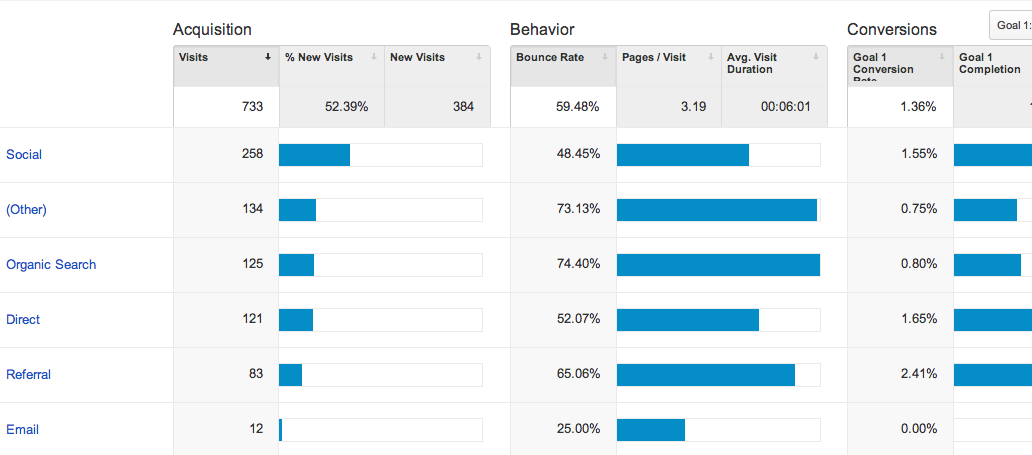Discovering What Data Is Google Analytics Goals Unable to Track
Discovering What Data Is Google Analytics Goals Unable to Track
Blog Article
Revealing the Blind Attractions: Understanding What Google Analytics Goals Can not Measure
In the world of digital analytics, Google Analytics stands as an effective tool for tracking and examining on the internet customer communications. Nonetheless, in the middle of its durable capacities, there exist dead spots that typically avert measurement. Understanding what Google Analytics objectives can not gauge is critical for obtaining a detailed sight of individual habits and interaction. As we dig into the complexities of these blind areas, we uncover a complex internet of undiscovered areas that hold useful insights into customer activities and motivations, difficult conventional knowledge and clarifying the restrictions of our data-driven understanding.
User Habits on External Platforms
Recognizing how customers communicate on external systems is essential for maximizing on the internet strategies. Outside platforms, such as social media sites networks, recommendation websites, and on the internet discussion forums, play a considerable duty in driving website traffic to a company's web site. By evaluating customer behavior on these platforms, organizations can get valuable insights right into the effectiveness of their advertising initiatives and the preferences of their target market.
One trick aspect of customer actions on external systems is the referral source. By tracking where the individuals are coming from, organizations can recognize which platforms are driving one of the most traffic to their internet site. This information can assist firms assign their sources better, concentrating on the systems that generate the very best outcomes.

Offline Communications and conversions
Analyzing customer behavior on external systems offers valuable understandings into on-line strategies; nonetheless, taking into consideration offline conversions and interactions is equally imperative for a thorough understanding of a business's overall efficiency. Offline conversions, such as in-store purchases or phone questions, play a considerable duty in numerous organizations' success.

Acknowledgment Beyond Last Click
When diving into the world of digital advertising analytics, it comes to be vital to look beyond the solitary touchpoint of the last click for an extra thorough understanding of attribution. While Google Analytics offers beneficial understandings right into user behavior, depending exclusively on last-click attribution can be limiting - what data is google analytics goals unable to track. Attribution designs that surpass the last click supply an extra nuanced view of the consumer trip, thinking about all the touchpoints that result in a conversion
Acknowledgment past the last click permits marketing professionals to designate credit scores to different interactions along the conversion course, offering a clearer image of the effectiveness of different advertising channels. By exploring multi-touch acknowledgment designs such as straight, time degeneration, or position-based attribution, organizations can much better allot their marketing budget plans and optimize their approaches for optimal effect.
Understanding the influence of each touchpoint in the conversion procedure is crucial for making educated decisions and making the most of ROI. By accepting attribution beyond the last click, companies can gain much deeper understandings right into consumer habits and tailor their advertising efforts extra effectively.
Cross-Device and Cross-Browser Monitoring

In a similar way, cross-browser monitoring matches cross-device monitoring by catching customer actions as they switch over in between different web internet browsers. Comprehending just how users interact with sites on different web browsers can assist marketers maximize their online experiences to guarantee uniformity and functionality throughout various platforms.
Qualitative Information and Customer Intent
Understanding customer intent through qualitative data evaluation is essential for creating targeted digital advertising techniques that reverberate with the requirements and preferences of the target audience. Qualitative information offers insights right into the 'why' behind customer activities, dropping light on inspirations, emotions, and preferences that quantitative data alone can not capture. By analyzing user feedback, comments, and communications, marketing professionals can reveal useful information concerning individual intent, permitting them to official source customize their messaging, content, and offerings to better line up with what their audience is seeking.
Qualitative information additionally helps in recognizing the context in which individuals involve with a website or app. This contextual understanding enables online marketers to produce more relevant and individualized experiences, ultimately driving higher engagement and conversion prices. By diving right into customer intent via qualitative data analysis, companies can acquire a deeper understanding of their target market, resulting in a lot more reliable advertising approaches that meet customers' demands and assumptions.
Conclusion
Finally, Google Analytics objectives have limitations in measuring customer actions on external platforms, offline conversions, Visit Website acknowledgment beyond last click, cross-browser and cross-device tracking, and qualitative information associated to customer intent. what data is google analytics goals unable to track. It is necessary for organizations to be mindful of these dead spots in order to supplement their data evaluation with various other devices and techniques to acquire a more detailed understanding of their audience and improve their total electronic marketing methods
By evaluating customer behavior on these systems, companies can acquire valuable understandings into the effectiveness of their marketing efforts and the choices of their target audience.
Evaluating individual behavior on external systems provides beneficial understandings right into on-line methods; however, considering offline conversions and interactions is equally vital for a detailed understanding of a business's total performance.In digital advertising analytics, moving past last-click acknowledgment to explore cross-device and cross-browser tracking is vital for obtaining an all natural understanding of customer interactions throughout different systems and tools. By examining customer comments, comments, and interactions, marketing experts can uncover important info concerning individual intent, enabling them to customize their messaging, content, and offerings to better line up with what their audience is looking for.
By delving into user intent with qualitative information analysis, companies can get a much deeper understanding of their target audience, leading to a lot more reliable advertising methods that fulfill customers' demands and expectations.
Report this page